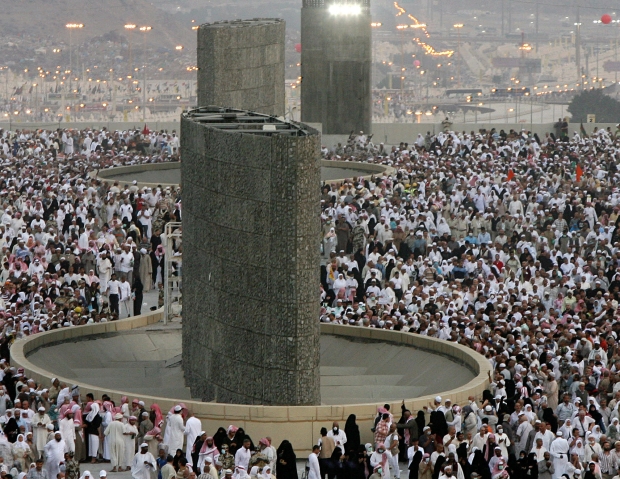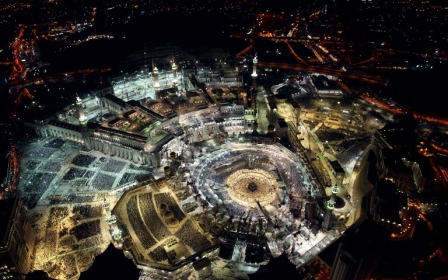Saudi needs to rethink Hajj control after worst stampede in years

The stampede on Thursday near Mecca that killed more than 700 pilgrims and injured over 800 is not a one-off tragedy, but part of a pattern of devastation and death that has come to be an expected part of the annual Muslim pilgrimage.
The sadness and grief following the news of this incident will inevitably be accompanied by waves of anger directed towards the Saudi authorities who are responsible for overseeing the pilgrimage itself and for ensuring the safety of those who take part.
I’ve been on Hajj three times and every time, amid the excitement and spiritual buzz that occurs from taking part in this essential rite that all Muslims are required to perform at least once in their lifetime, is the nervous instruction to be careful, especially on Eid when crowds are at their most concentrated.
The day before Eid – called the day of Arafat - is a day of repentance and supplication. Pilgrims climb Mount Arafat, praying for forgiveness. When they descend from the mountain it has to be with the firm belief that they have been cleansed of all of their sins.
The following day is Eid, celebrated around the world by all Muslims. For those on Hajj, this day is spent in Mina, performing the last of the major rites of Hajj which is the “stoning of the devil” known as the Jamarat.
The Jamarat is done partly to re-enact something that Prophet Abraham (Ibrahim in Arabic) is said to have done when he went on Hajj himself thousands of years ago. Tradition states that the devil appeared to Abraham while he was in Mina and the Angel Gabriel told him to throw stones at him and eventually the devil withdrew. Pilgrims therefore collect small pebbles the night before in preparation for this part of the Hajj ritual.
It is at the site of the stoning, and on the bridge that leads to it, that most of the major Hajj accidents occur. With around two million pilgrims taking part, all trying to access the same spot, at the same time, the crowds are always tightly packed and this is one of the most risky and arduous parts of the entire experience. The crowds consist of men, women, children, the elderly, and the disabled, all tightly packed together. With everyone concentrated in one particular spot, incidents in which waves of pilgrims crush and suffocate people are all too common.
Each time I’ve been on Hajj, I’ve been warned in advance about this particular rite. Women are frequently advised to let men go forward and do the stoning on their behalf and not to risk taking part themselves.
This is advice that many people, myself included, often shrug off, desperate to actively take part in every element of the pilgrimage and keen not to miss a single moment of this special event. The sheer heaving mass of people, however, can get frenzied and has come to represent the most deadly day of the Hajj.
Whose fault is it that this tragedy has occurred yet again? Fatal stampedes occurred in 1990 where more than 1,400 were killed, in 1998, where over 180 people were trampled in Mina, in 2001 and 2004. It’s not yet clear what caused this particular stampede, but following each fatal incident, Saudi Arabia comes under increasing pressure to make facilities safer for pilgrims.
One of the worst stampedes in recent years occurred in 2006 when at least 345 pilgrims were killed and around 1,000 injured in Mina.
Following the 2006 incident the Saudi authorities did take action and actually destroyed the Jamarat bridge that leads to the stoning site and constructed a much wider bridge in its place which was constructed over several levels. They also replaced the three columns that pilgrims traditionally threw stones at with three much larger wall like pillars which meant people had a much larger surface area to aim for and meant they could spread out.
But clearly much more still needs to be done and it falls on the government of Saudi Arabia to figure out what that is. Whether it’s more crowd control, restricting the number of pilgrims at the site at any one time, increased security, or other measures, something must be done if events like this are to come to an end.
As spiritually awesome and life-changing as the Hajj is for individual participants, there is no doubt that the Hajj is a logistical nightmare for the authorities and for the most part Saudi does very well. They accommodate almost two million pilgrims and Mina has around 160,000 tents set up to accommodate the masses. There is no doubt that the facilities have improved over the years and security is at an all-time high, but if this mass death event is to stop being a regular occurrence, Saudi needs to do more. The Hajj is meant to be a time of worship and spirituality and should not be one associated with such an unnecessary loss of life.
New MEE newsletter: Jerusalem Dispatch
Sign up to get the latest insights and analysis on Israel-Palestine, alongside Turkey Unpacked and other MEE newsletters
Middle East Eye delivers independent and unrivalled coverage and analysis of the Middle East, North Africa and beyond. To learn more about republishing this content and the associated fees, please fill out this form. More about MEE can be found here.






